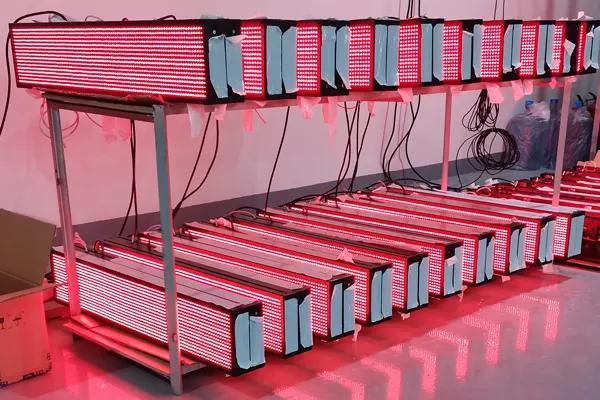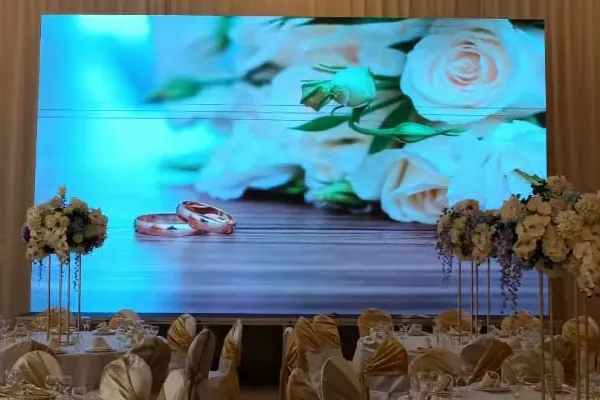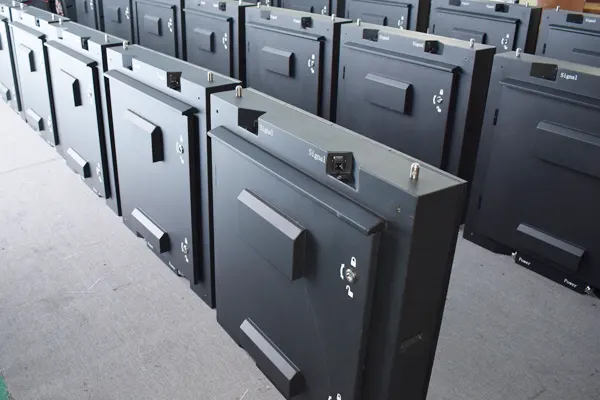With advancement, more and more types of LED displays are coming to the market. Suppliers now want to ensure its suitability in every field. These screens provide high-quality images. They are attention-grabbing and engaging.
The LED screen market is trying its best to give you opportunities to have the best option for your setup. Besides, they are highly consumable. So you can easily design the layout and display the content as you want. So to meet the demands, we have diverse types of LED displays available. So today, we will discuss its classification.
We can classify display screens on a different basis. There are six types of categories. These are:
- Based on color
- Based on the environment
- Based on distinct functions
- Based on the control system
- Based on application requirements
- Based on LED lamps
Today, we are going to discuss these. Let’s start with the colors.
Based on color:
We can classify the screens into three types according to LED’s color. These include:
- Single base color display
- Dual base color display
- Full-color LED display
Single base color display:
In this kind of LED display, every pixel has only one color. Mainly these pixels adopt red color. It is because its luminescent efficiency is higher. Red color can also help the display to appear brighter.
We can also refer to it as monochrome.
It is not only red as the luminance material. It can be green too. There is also the possibility of mixing red, green, and yellow colors. They appear as combined colors.

Dual base color display:
For this kind of LED display, there will be two colors of LEDs. We can also say every pixel has two base colors, red and green. These two base colors can generally superpose yellow. With only these two colors, we can make different grayscale colors.
There is the possibility of creating 65,536 kinds of different grayscale colors. These are possible through the composition of red and green.

Full-color LED display:
It is a tricolor or three-color LED display. In the tricolor LED display, every pixel has three base colors red, green, and blue.
These are the three primary colors. By combining these colors, we can make approximately every type of color. Thus, there is the possibility of creating 16,777,216 colors.
We can say that these three colors control the grayscale. Thus, we can form all colors that exist in nature.

Based on the environment:
We can classify display screens based on the environment into three categories. These include:
- Indoor LED display
- Outdoor LED display
- Semi-outdoor LED display
Indoor LED display:
As the name indicates, these screens are for indoor applications. These are specifically for indoor setups, so they have different characters. They differ from outdoor LEDs in brightness. The brightness is not high. Around the year 2010, we used dot matrix modules mainly. However, as technology has improved dramatically, fine-pitch LED displays are becoming more popular. There is also no sealed waterproof function in these screens.
Moreover, the indoor screen area is generally smaller than outdoor screens. So, we adopt a narrow pitch to achieve high resolution. And the viewing distance is only a few meters.
These screens are ideal for forming a display wall. It is due to their high-quality resolution. We can use different sizes and shapes to plan a display wall. A single system can usually control all screens of the display wall. It makes it easy to manage such screens for your workplace.
There is a wide range of use for these screens in an indoor setup. For example, it includes airport information displays, retail marketing displays, and education displays.
Indoor LED displays can be further divided based on their pixel sizes.

Outdoor LED display:
For outdoor LED displays, we need a lot of planning. Before manufacturing and during installation, all steps are crucial. As you know, we have to install them outdoors and consider many factors. Certain weather conditions and sunlight are significant points of concern.
These screens are water and moisture-proof. Thus, we use a waterproof box with a good, wind-resistant, lightning-proof screen. Moreover, its luminance intensity is of great importance.
The outdoor display area is tens, hundreds, or even thousands of square meters. Their resolution is 10,000-160,000 pixels per square meter. The luminous brightness for outdoor screens can be 4,000-7,000 nits or more. But it can vary according to the direction of the LED screen.
We find the use of such screens in outdoor event spaces. Advertisement via billboards is also its domain. We can divide outdoor LED displays according to the density of their pixel.
For outdoor screens, we have many matters of concern. Its maintenance is quite difficult as compared to indoor screens. We prefer to install air conditioning units to keep them functioning correctly. It prevents the system from overheating when dealing with a hot environment.

Semi-outdoor LED display:
Besides indoor and outdoor display screens, there are also semi-outdoor LED displays. They have properties and features in between the indoor and outdoor screens. We use the semi-outdoor LED displays at:
- Open halls
- Under eaves
- Beneath sunroofs
- Under canopy
They have almost the same brightness level as the outdoor screens. But they do not have the same weather resistance features.

Based on distinct functions:
In this part, we will discuss the classification according to the function. The following are the types:
- Strip display
- Graph-text display
- Video display
- Digital mixed display
Strip display:
We can operate them in offline conditions. It can be input through a remote controller. We can connect it to a computer without being online. It is of strip shape, so usually named a strip display.

Graph-text display:
We use these to display letters and graphics. It is without grayscale. We control it generally via USB, network cable, or WIFI. They can show plenty of fonts as well as graphs.
Like strip LED displays, we can also operate them in offline conditions. Besides, we can manage many graph-text screens with a single computer. These features make them more workable as compared to video displays.
Digital mixed display:
It is the cheapest display of all. We use such screens in the stock exchange and banks for stock market information. Other important information includes bank exchange rates and all kinds of price lists.
For example, we use them to show welcoming remarks, announcements, and advertisements. These display screens can also support remote controller input.

Video display:
We control this type of display with the help of a monitor. Thus, its display elements are the same as the pixels of controlling computers. Moreover, it has 256 levels of grey scale control. Therefore, we can operate them with computers efficiently.
The display usually operates with a multimedia card and can play video signals. Other advantages of video display are its open performance and system operation.
It is the real-time reflection of a computer monitor.
Based on the control system:
We have two control systems for the LED displays. These are:
- Synchronization control system
- Asynchronization control system
Based on these control systems, we have:
Synchronization control LED display:
These display screens have synchronization control systems. It means that the screen displays the content in real-time. So what the computer shows, the screen shows. When the computer is off, the screen stops displaying the content.
In this type of LED display, synchronization is the mode of operation. This pattern is the same as what we observe in the case of computer monitors.
It has the capability of displaying many greyscale colors. These colors help in achieving the effect needed in multimedia advertising.
Asynchronization control LED display:
These display screens have asynchronization control systems. It doesn’t show the content in real time. Instead, the computer edits the content. It sends the content to the control card and then stores it. The user can upload the content through the internet. Even when the computer is off, the screen can display the content.

Based on application requirements:
On this basis, we have:
- Rental LED display
- Fixed LED display
Rental LED display:
As the name indicates, these screens are best for rental purposes. The screens’ design is such that it offers effortless assembly and disassembly. The cabinets have fast lock features. It ensures position accuracy.
We need just a few seconds for the complete installation of the whole display cabinet. We find their use in events like large festival galas and wedding celebrations.

Fixed LED display:
We cannot move these display screens regularly. But you can permanently install it in a fixed position. The rental LED display is such a display that you can install, disassemble and transport at your own will. Of course, fixed and rental screens differ in various aspects. These include different use, panel structure, price, shape, etc.
We use LED screens in both conditions that are indoor and outdoor. LED screens are here to amaze the audience. It will make the place more valuable and enchanting.

Based on LED lamps:
Based on this, we have:
- DIP LED display
- SMD LED display
DIP LED display:
DIP stands for the double in-line package. It is a type of traditional LED display. We encapsulate red, green, and blue lights individually in such LEDs.
As the name indicates, all the pins are in line. A characteristic feature of such displays is brightness. They offer high brightness, more than 7,000 nits generally.
But they lack in viewing angle. So, they offer a small value of viewing angles. For horizontal, it is 100 degrees. While in the case of vertical, it is 55 degrees.

SMD LED display:
SMD stands for surface mount LED displays. Unlike DIP, it has LED lights encapsulated together. Green, red and blue have a joint capsule with patch-type pins.
Their brightness is not high as compared to the DIP LED display. But they offer a large viewing angle. The horizontal angle is 120 degrees. For the vertical angle, it is 70 degrees. Moreover, their consistency is good. Thus, they tend to find their role in outdoor and indoor setups.

Conclusion:
I have tried above to explain the types of display screens. Besides these, you may have heard various names, such as:
- Stage LED display
- Advertising LED display
- Church LED display
- Stadium LED display
- Transparent LED display
- Flexible LED display
- Lamp pole LED display
These are display screens that get their names from their use. Dreamway Technology is here to help you if you want any LED display.


